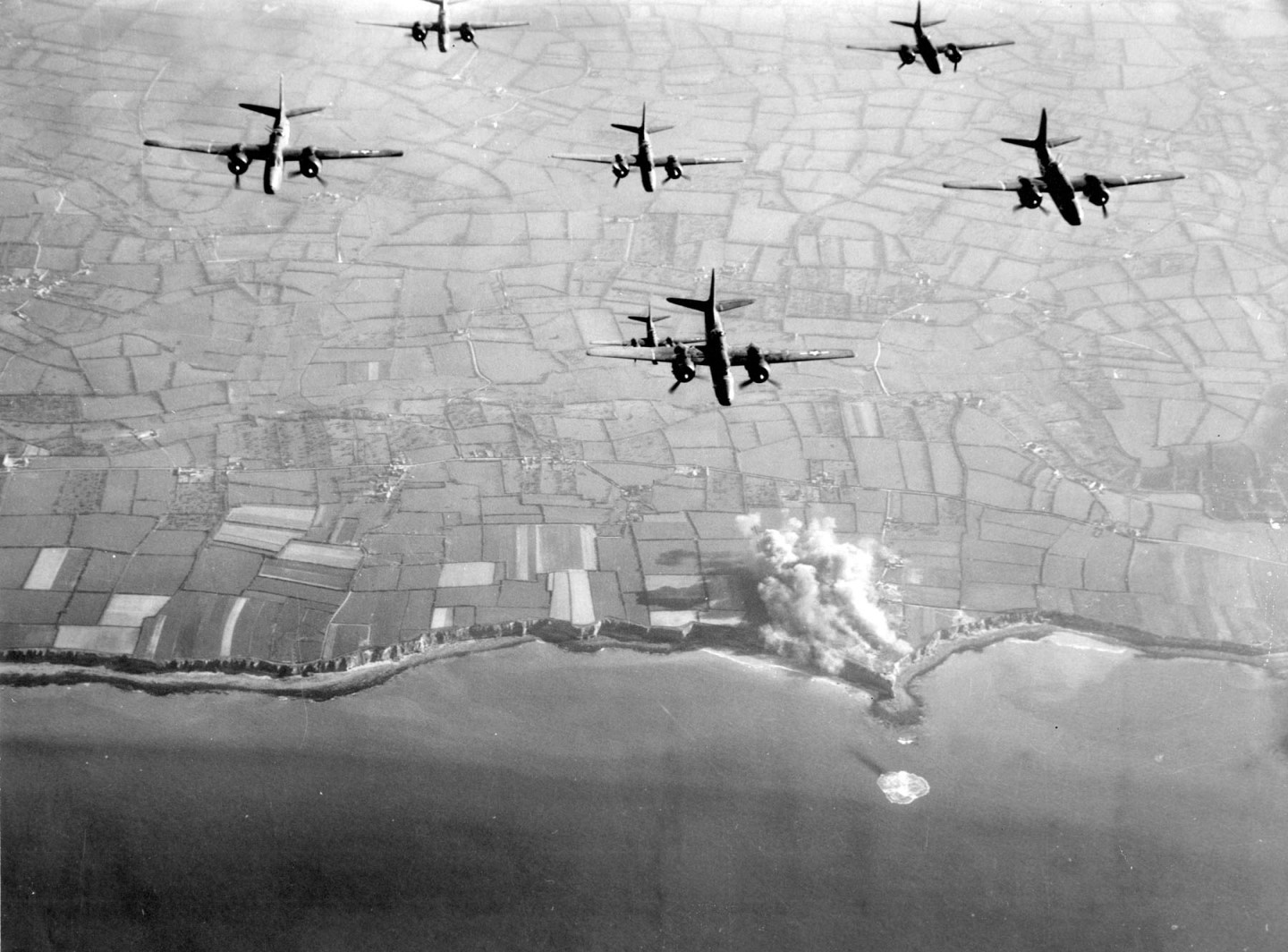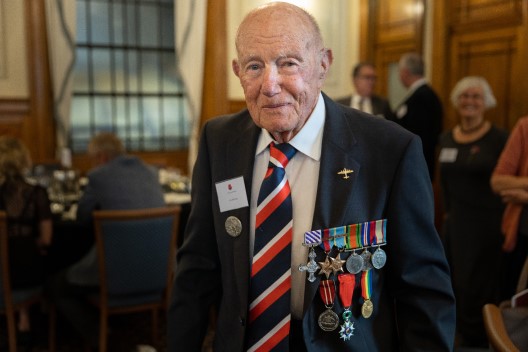An Australian’s D-Day from the skies

In the early morning of 6 June 1944, Royal Australian Air Force Pilot Officer Bill Purdy and his crew took off from Lincolnshire for the French coastline in their Lancaster bomber.
Their target was a German naval gun battery at Pointe Du Hoc, which had a commanding position over the beaches of Normandy.
‘We knew there were five naval guns there and they had to be taken out,’ Bill recounts.
He had no idea he was taking part in one of the greatest turning points of the Second World War.
Bill was 16 when war was declared. He remembers the intense patriotism coursing through Australian society at the time and, like many young people, he thought of the war as a bit of an adventure.
Keen to enlist and because he had a fondness for the flying adventures depicted in the Biggles novels, Bill joined the RAAF as soon as he turned 18.
‘I couldn’t imagine myself sloshing around on the ground with the Army,’ he chuckles. After earning his wings at RAAF Base Point Cook, Bill and most of his fellow trainees found out they were being posted to England.
About 10,000 Australians were seconded to the British Royal Air Force (RAF) Bomber Command during the war, working as pilots, navigators, engineers, bomb-aimers, gunners, wireless operators and ground crew.
Australians flew side-by-side with their Allied counterparts and there were two Brits in Bill’s aircrew.
Life in Bomber Command was a harrowing ordeal, with just a one-in-three chance of surviving a tour of 30 operations. Throughout the war, some 4,000 Australian airmen were killed while serving with Bomber Command, accounting for almost 10 per cent of all Australian combat deaths.

Bill remembers distinctly the uneasiness he felt when he heard he was going on an operation. ‘The stomach started to rumble a bit, because we all knew what the odds were of coming back,’ he recalls.
He spent his day preparing and testing the aircraft, packing his belongings, and writing a final letter home to his mother. But once the wheels were up, there was no time for fear. Bill focused on his job and making sure his crew made it home alive.
Bill had several close calls throughout the war. On one occasion, his plane was hit three times by flak and then strafed by an enemy fighter.
‘The poor old aircraft was like a colander. It was filled with holes, here there and everywhere. ‘My bomb aimer had a little strip taken off the back of his neck. The navigator had a piece that came down through the roof, straight through his book of charts, and buried in his desk.’
So, it was with a measure of caution that Bill approached Pointe Du Hoc, accompanied by dozens of other bombers. Each of the aircraft dropped fourteen 1000‑pound bombs, devastating the headland.
‘We left one big hole in the ground’, Bill says.
However, Bill later learnt that the German naval guns had been moved to a different location in the months before the bombing.
On his return home across the English Channel, his Lancaster burst from low-hanging cloud and Bill was confronted by the greatest armada in human history.
More than 6,500 ships and landing craft, carrying more than 130,000 troops, were steaming towards the five landing beaches of Normandy.
‘As far as the eye could see, there were ships,' Bill recalls. ‘You could have put your wheels down and taxied home.’
Bill realised in that moment that D-Day had finally arrived. He had just landed one of the opening blows in the Allied invasion of German- occupied France.
About 3,200 Australians took part in the D-Day landings, with our main contribution made in the air. Thirteen Australians were killed on 6 June: 11 airmen and 2 sailors. Hundreds more airmen would perish in the campaigns of the following months.
Bill flew a total of 37 operations with Bomber Command, for which he was awarded the Distinguished Flying Cross.
When we asked about his achievement, Bill humbly downplayed his own role and praised the work of the dedicated aircrews and ground crews. However, towards the end of the war, two of his crew told Bill that they sought him out as their pilot when he first landed in England.
‘They told me, “We went through all the other pilots in that place and we reckoned you were the only one who was going to bring us back alive”,’ he says.
Bill never knew why they had that intuition, but bring them back alive he did.
Images:
- Bombing of Pointe Du Hoc by A-20 Havoc bombers of the 9th Air Force
- Bill Purdy